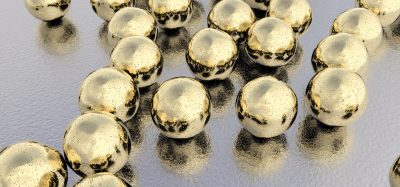Peptide delivered by nasal spray can reduce seizure activity
Posted: 16 August 2022 | Ria Kakkad (Drug Target Review) | No comments yet
A novel peptide augments the brain’s natural mechanism to help prevent seizures and protect neurons in research models of both Alzheimer’s and epilepsy.


Scientists at Augusta University, US have developed a A1R-CT peptide which can be administered through a nasal spray. The spray holds promise for reducing the uncontrolled electrical activity that is common after traumatic brain injury and which affects more than half of individuals with Alzheimer’s disease. Details of the nasal spray were recently published in JCI Insight.
A1R-CT works by inhibiting neurabin which reduces hyperexcitability of neurons that disrupts normal communication and produces seizures. The fact that it can be delivered through the nose indicates the peptide’s potential as a new seizure rescue medication as well, to help interrupt, for example, a seizure cluster, where disabling seizures are occurring back-to- back.
The researchers found that the protein neurabin, which appears to be primarily present in the brain, provides that balance to prevent hyperactivity of the A1 receptor. The fact neurabin is primarily in the brain, means that altering its activity should not have the potential body-wide impact of directly altering A1 receptor activity.
The team set to work developing the peptide that could interfere with the A1 receptor and neurabin’s interaction and so enable more of the natural protective, seizure-reducing benefit.
A1 receptor activation reduces the excited state of the neurons by modulating ion channels — proteins in the cell membrane that allow passage through the cell of other proteins — which help generate electrical signals. A result is so-called hyperpolarization, which means the neuron is less likely to fire an electrical signal.
A1 receptor activation also decreases the release of glutamate. It also provides additional benefit to neurons by providing some protection from inadequate oxygen and blood supplies, which may occur in the case of an injury. The scientists have noted a dramatic reduction in death of neurons in their Alzheimer’s model, for example, with the use of their peptide.
The team showed, therefore that inhibiting neurabin — either by reducing it directly or with their peptide — enables increased action by A1C to reduce excessive electrical activity in the brain. Furthermore, the peptide is effective in both a mouse model of severe seizures and seizures in an Alzheimer’s mouse model. And it is effective when directly injected into the brain or via nasal spray.
Looking further at the impact of targeting neurabin, they found that mice with a neurabin deficiency had significantly shorter, less severe seizures and they all survived. Those with the normal neurabin levels intact experienced seizures lasting for up to 30 minutes and about 10 percent of the mice died shortly afterward. Blocking A1 receptor resulted in more severe seizures in the neurabin-deficient mice and increased the death rate to more than 50 percent.
The scientific team also continues to tweak the peptide to ensure it functions optimally, and is pursuing funding needed to pursue clinical trials.
Related topics
Neurosciences, Peptide Therapeutics
Related conditions
Alzheimer’s disease, Epilepsy, seizures
Related organisations
Augusta University







